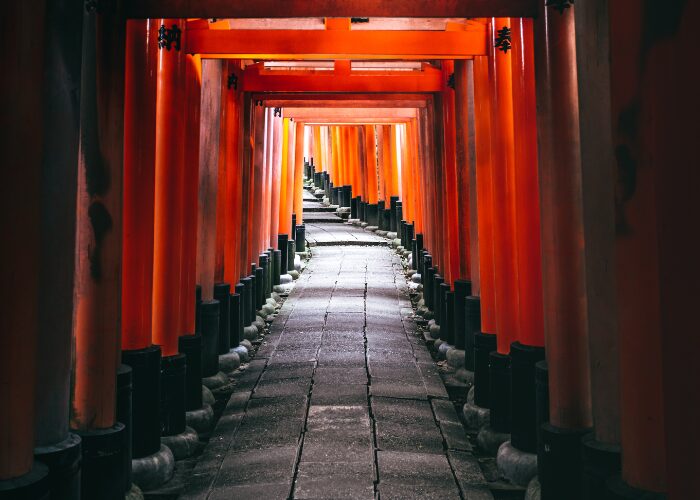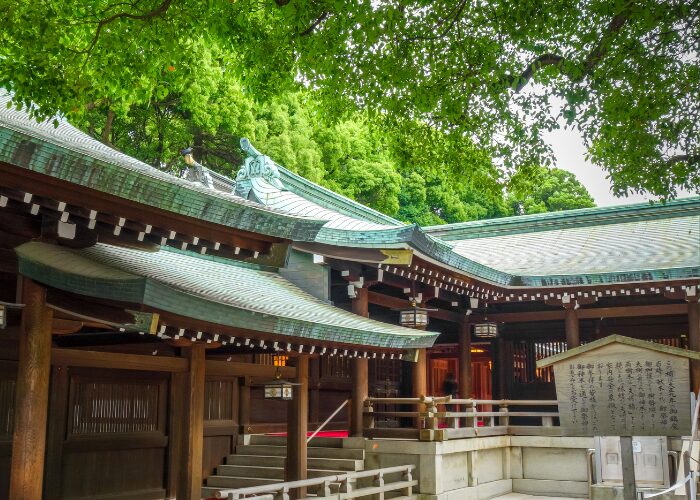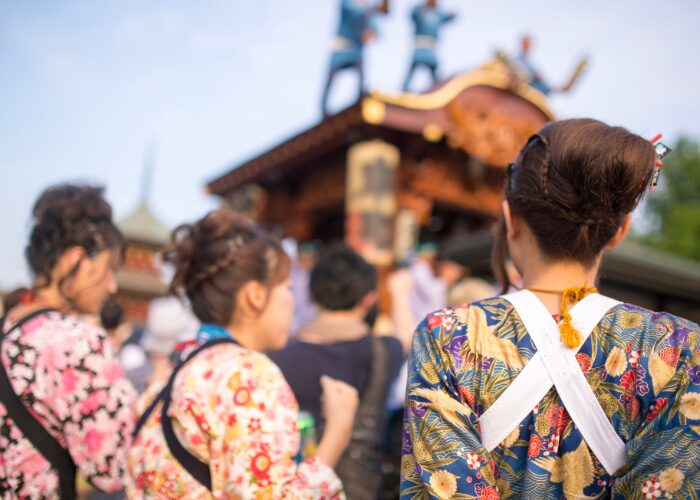Exploring Shinto in Detail
Shinto, often referred to as “the way of the gods,” is a traditional Japanese religion deeply rooted in the country’s culture, history, and social practices. Its origins are ancient, predating recorded history, and it has evolved over millennia to become an integral part of Japanese identity. Here, we will explore Shinto in great detail, covering its history, beliefs, practices, deities, rituals, festivals, and its place in contemporary Japan.

1. Historical Background of Shinto
Shinto is intertwined with Japan’s history and landscape. Unlike many religions with a single founder or canonical texts, Shinto evolved organically over time, influenced by the natural environment, local customs, and historical events.
1.1 Origins and Early Development
The origins of Shinto are ancient and likely began as an animistic faith, with early Japanese people worshipping natural phenomena and spirits known as kami. These kami were believed to inhabit natural objects and landscapes, such as mountains, rivers, trees, and stones. Early Shinto was localized, with each community having its own rituals and deities.
1.2 Influence of Buddhism and Confucianism
With the introduction of Buddhism to Japan in the 6th century, Shinto underwent significant changes. The syncretic nature of Japanese religious practice led to the blending of Shinto and Buddhist beliefs. Buddhist temples often included Shinto shrines, and vice versa.
Confucianism, introduced from China, also influenced Shinto, particularly in the realms of ethics, governance, and social harmony. Confucian ideals were integrated into Shinto rituals and practices, emphasizing family loyalty, respect for elders, and social order.
1.3 State Shinto and the Meiji Restoration
The Meiji Restoration of 1868 marked a significant turning point in the history of Shinto. The new Meiji government sought to modernize Japan and strengthen national identity, using Shinto as a tool for political unification. State Shinto was established, separating Shinto from Buddhism and promoting it as the national tradition. Shinto shrines were placed under state control, and the emperor was elevated to a special status, symbolizing the unity of the Japanese people.
1.4 Post-World War II Shinto
After Japan’s defeat in World War II, State Shinto was officially abolished under the Allied Occupation. The 1947 Constitution of Japan established the separation of religion and state, ensuring freedom of religion. Shinto returned to its status as a traditional, folk religion, but its influence on Japanese culture and society remained strong.
2. Beliefs and Worldview of Shinto
Shinto beliefs are centered around the worship of kami, the spirits or deities that inhabit the natural world. Shinto does not have a single, unified doctrine but is characterized by a variety of rituals and practices aimed at fostering harmony between humans, nature, and the kami.
2.1 Kami
Kami are the central beings in Shinto belief. They can be natural forces, ancestral spirits, or deified historical figures. Kami can be benevolent or malevolent, and their influence is sought for various purposes, from ensuring good harvests to protecting against disasters.
There are countless kami, but some of the most significant include:
- Amaterasu: The sun goddess and one of the most important kami in Shinto. She is considered the ancestor of the imperial family.
- Susanoo: The storm god and brother of Amaterasu, known for his tempestuous nature.
- Inari: The kami of rice, agriculture, and prosperity, often depicted as a fox or accompanied by foxes.
2.2 The Concept of Purity
Purity is a fundamental concept in Shinto. Ritual purity is necessary to maintain harmony with the kami. Impurity can result from various sources, including death, disease, and certain natural phenomena. Purification rituals, such as misogi (ritual washing) and harae (ritual purification), are performed to cleanse impurities and restore spiritual balance.
2.3 Life and Death
Shinto views life as a continuous process, with death being a natural part of this cycle. Ancestors are revered and honored through rituals and offerings, maintaining a connection between the living and the deceased. However, death is also associated with impurity, and specific rites are performed to purify those who come into contact with death.
3. Shinto Practices and Rituals
Shinto practices are diverse, ranging from daily rituals to grand festivals. These practices aim to honor the kami, seek their blessings, and ensure the well-being of the community.
3.1 Worship at Shrines
Shrines are the focal points of Shinto worship. Each shrine is dedicated to one or more kami and serves as a place for the community to gather and perform rituals.
Key elements of shrine worship include:
- Torii Gates: Symbolic gateways that mark the entrance to a sacred space. Passing through a torii is an act of purification.
- Honden: The main sanctuary where the kami is enshrined. Access to the honden is often restricted to priests.
- Ema and Omamori: Ema are wooden plaques on which worshippers write prayers and wishes, while omamori are protective amulets sold at shrines.
3.2 Daily and Seasonal Rituals
Daily rituals, such as offerings of food and drink, are performed to honor the kami. Seasonal rituals, often tied to agricultural cycles, are also important. Some major seasonal festivals include:
- Hatsumōde: The first shrine visit of the New Year, where people pray for health and prosperity.
- Obon: A festival to honor the spirits of ancestors, marked by dances, lanterns, and family gatherings.
- Shichi-Go-San: A rite of passage for children aged three, five, and seven, celebrated with visits to shrines and blessings for their growth and health.
3.3 Purification Rituals
Purification is essential in Shinto practice. Misogi involves ritual bathing in natural bodies of water, while harae includes ceremonies performed by priests to purify individuals, objects, or spaces. These rituals are often performed before major events or festivals to ensure spiritual cleanliness.
4. Shinto Festivals (Matsuri)
Festivals, or matsuri, are vibrant and joyous occasions that bring communities together to celebrate and honor the kami. Each festival has its own unique customs and traditions, reflecting the local culture and the particular kami being worshipped.
4.1 Types of Festivals
- Seasonal Festivals: Celebrated according to the agricultural calendar, such as the rice planting and harvesting festivals.
- Kami Festivals: Dedicated to specific kami, such as the Gion Matsuri in Kyoto, which honors the deity of Yasaka Shrine.
- Community Festivals: Celebrated by local communities, often featuring parades, music, dance, and traditional performances.
4.2 Major Festivals
- New Year (Shōgatsu): The most important festival in Japan, marked by shrine visits, family gatherings, and various customs to welcome the new year.
- Gion Matsuri: Held in Kyoto in July, one of Japan’s most famous festivals, featuring elaborate floats and processions.
- Aoi Matsuri: An ancient festival in Kyoto, involving a grand procession in Heian period costumes.
- Kanda Matsuri: A major festival in Tokyo, celebrated with parades and mikoshi (portable shrine) processions.
5. Shinto and Japanese Culture
Shinto has deeply influenced Japanese culture, arts, and social customs. Its principles are evident in various aspects of daily life and traditional practices.
5.1 Influence on Arts and Architecture
Shinto aesthetics emphasize simplicity, natural beauty, and harmony with the environment. This is reflected in traditional Japanese architecture, garden design, and arts such as ikebana (flower arranging) and tea ceremony. Shinto shrines themselves are examples of this aesthetic, often blending seamlessly with their natural surroundings.
5.2 Social and Ethical Values
Shinto promotes values such as respect for nature, harmony within the community, and gratitude for life’s blessings. These values are integral to Japanese social behavior, etiquette, and communal activities.
5.3 Festivals and Community Life
Shinto festivals play a vital role in community life, fostering social cohesion and cultural continuity. They provide opportunities for communal participation, celebration, and the reinforcement of local identities and traditions.
6. Shinto in Contemporary Japan
In modern Japan, Shinto continues to be an important cultural and spiritual force, adapting to the changing social and political landscape.
6.1 Shinto and Modernity
While Japan has become highly industrialized and urbanized, many traditional Shinto practices remain relevant. Urban shrines are frequented by people seeking blessings for business, health, and success. Shinto rituals are also incorporated into modern life events, such as weddings and New Year celebrations.
6.2 Shinto and the Environment
Shinto’s reverence for nature has found resonance in contemporary environmental movements. The religion’s emphasis on harmony with nature aligns with global ecological concerns, and Shinto shrines often engage in activities to protect and preserve natural sites.
6.3 Challenges and Adaptations
Shinto faces challenges in modern Japan, such as declining participation in rural areas, the secularization of society, and the need to address contemporary social issues. However, it continues to adapt, finding new expressions and relevance in the lives of Japanese people.
7. Conclusion
Shinto, as the indigenous spirituality of Japan, is a complex and multifaceted tradition. It encompasses a rich tapestry of beliefs, rituals, and cultural practices that have evolved over thousands of years. From its ancient animistic roots to its role in modern Japanese society, Shinto remains a vital and enduring
4o


Leave a Reply